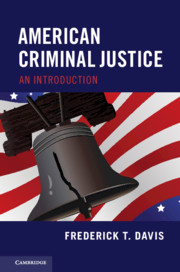Book contents
- American Criminal Justice
- American Criminal Justice
- Copyright page
- Dedication
- Contents
- Acknowledgments
- 1 Introduction
- 2 The Federal Structure; Sources of the Law
- 3 Investigation and Evidence-Gathering—The Participants
- 4 Investigation and Evidence-Gathering—Procedures
- 5 Arrest and Pretrial Detention
- 6 The Decision to Prosecute, or Not
- 7 Joinder of Charges and Defendants
- 8 Venue
- 9 Assistance of Counsel
- 10 Trial Rights and Preparation for Trial
- 11 Alternative Outcomes
- 12 Double Jeopardy
- 13 The Trial
- 14 Sentencing
- 15 Appeals
- 16 Corporate Criminal Responsibility
- 17 Internal Corporate Investigations
- 18 Professional Responsibility
- 19 Conclusion
- Bibliography
- Index
4 - Investigation and Evidence-Gathering—Procedures
Published online by Cambridge University Press: 08 June 2019
- American Criminal Justice
- American Criminal Justice
- Copyright page
- Dedication
- Contents
- Acknowledgments
- 1 Introduction
- 2 The Federal Structure; Sources of the Law
- 3 Investigation and Evidence-Gathering—The Participants
- 4 Investigation and Evidence-Gathering—Procedures
- 5 Arrest and Pretrial Detention
- 6 The Decision to Prosecute, or Not
- 7 Joinder of Charges and Defendants
- 8 Venue
- 9 Assistance of Counsel
- 10 Trial Rights and Preparation for Trial
- 11 Alternative Outcomes
- 12 Double Jeopardy
- 13 The Trial
- 14 Sentencing
- 15 Appeals
- 16 Corporate Criminal Responsibility
- 17 Internal Corporate Investigations
- 18 Professional Responsibility
- 19 Conclusion
- Bibliography
- Index
Summary
Police investigations have two principal and overlapping functions in the administration of criminal justice: (1) to determine if a crime occurred (and if so to identify and, when appropriate, arrest the person or persons responsible); and (2) to collect evidence that would be admissible at trial and sufficient to prove the guilt of those ultimately accused of responsibility. The length and complexity of this process, and the range of investigative techniques brought to bear, vary tremendously. In a very simple “street crime,” an apparent culprit may be identified and arrested immediately on a reactive basis, and the evidence-gathering may be straightforward and limited in scope; investigations in more complicated matters may take place on a proactive basis and can take months or even years in order to review and obtain evidence before a decision can be made to prosecute. This chapter will review the principal steps or procedures that may come into play in a variety of circumstances. The discussion will be divided into four topics: (A) the distinction between reactive investigations precipitated by an on-the-spot arrest and proactive ones where the arrest follows an investigation; (B) evidence-gathering techniques that may be employed by the police without any judicial authorization; (C) those instances where prior judicial approval is necessary; and (D) the use of a grand jury during an investigation.
- Type
- Chapter
- Information
- American Criminal JusticeAn Introduction, pp. 25 - 40Publisher: Cambridge University PressPrint publication year: 2019



